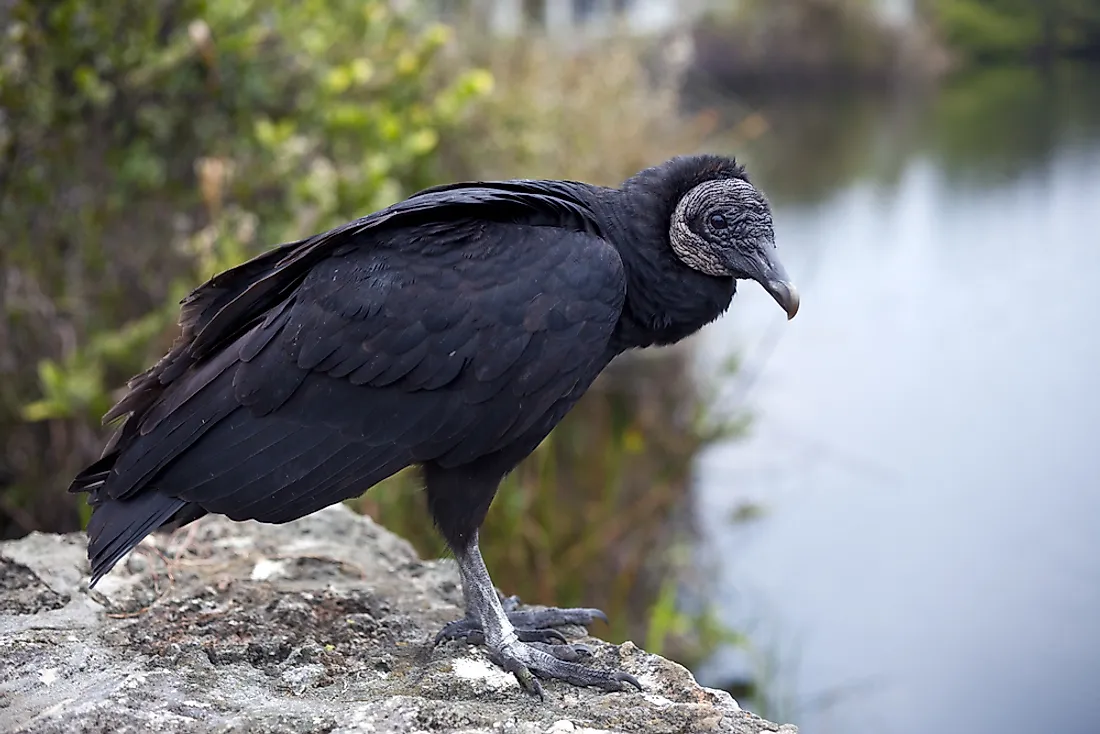Black Vulture Facts: Animals of North America

The Coragyps atratus, also known as the black vulture, is a bird belonging to the Cathartidae family. It is one of the seven species of New World Vultures. The black vulture is the only living species of the Coragyps genus. The range of the black vulture stretches from South America to the United States. The black vulture is usually found in the company of the turkey vulture. Black vultures are considered to be a bad omen in various cultures; therefore they are not always welcomed by human beings.
5. Physical Description
Black vultures are relatively large birds with a 66-inches wingspan, maximum length of about 29 inches, and weight of about 6.6 pounds. Their tarsus measures about 3.3 inches while their extended wing-bone is over 15.2 inches long. They have a featherless neck and head. As their name depicts, black vultures have a glossy black plumage and grayish white legs. The base of their feathers has a white patch that’s visible when they are flying. Black vultures have short 8.3-inch squared tails. They have a dark-gray wrinkled skin on their neck and head.
4. Diet
The Coragyps atratus feeds mainly on carrion, but when they are in regions inhabited by human beings, they tend to forage in garbage dumps. They can injure or kill newborns and eat decomposing plant materials. Black vultures play a significant part in the ecosystem when they decompose carrions that would have become a breeding space for diseases. Black vultures follow other vultures which have a great sense of smell, and since they are aggressive when eating, they can chase bigger vultures from the carcass.
3. Habitat and Range
The black vulture’s range includes most parts of South America, Central America, Mexico, and the southeastern parts of the US. Most black vultures tend to build permanent residents within their habitats, although the ones living in the northernmost parts of their habitats can migrate for a short distance. In South America, the black vulture’s range extends from Uruguay to central Chile. These vultures prefer living in open lands. They also reside in the grasslands and shrublands, moist lowland forests, pastures, swamps, and wetlands. Black vultures are rarely found in hilly areas.
2. Behavior
The black vulture usually defecates on its legs just like all the other vultures. It uses the evaporation of the moisture in its feces to lower the temperature of the blood vessels on its feet through a process referred to as urohidrosis. Since it does not have a syrinx, the black vulture has few vocalization capabilities. Therefore, it’s a silent bird that can only grunt or hiss when feeding or agitated. They are gregarious birds which perch in huge groups. Black vultures regurgitate when disturbed or approached which helps with deterring predators.
1. Reproduction
They are monogamous birds, and a pair can use the same nesting place for years. During mating season the male gets the attention of a female bird using some sounds. Black vultures never build nests like other birds; instead they lay eggs on the ground in abandoned buildings, hollow trees, and caves among other dark places. The gestation period of vultures is between 32 to 41 days.











